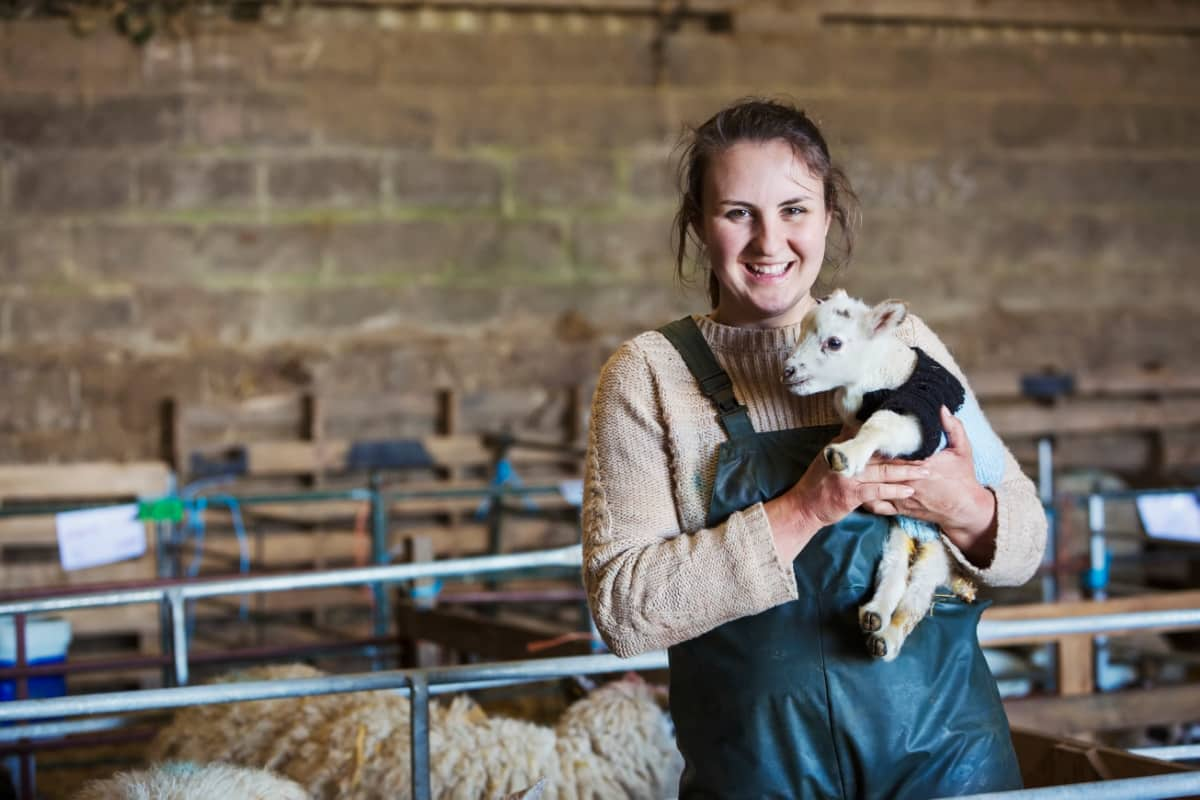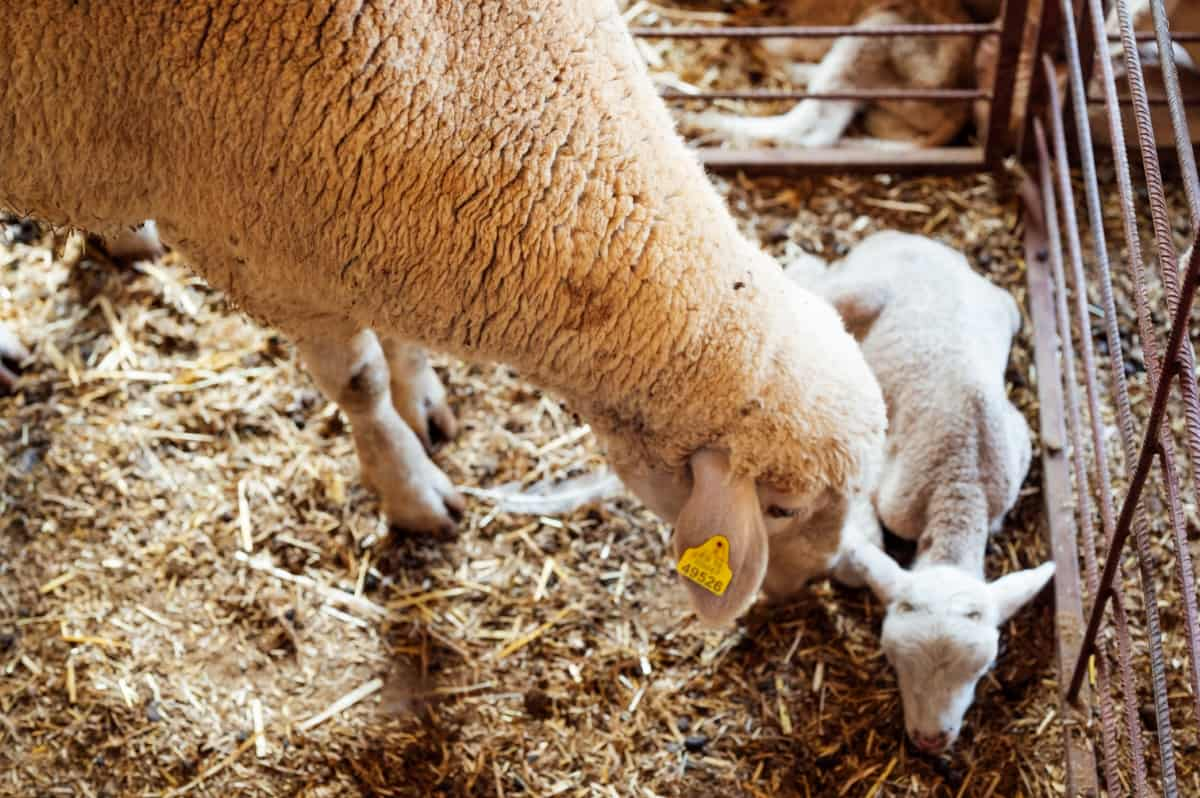A small sheep barn is essential for those who wish to raise sheep, ensuring their safety, health, and comfort. In understanding the basics of designing such a barn, it’s crucial to acknowledge key factors like how much barn space a sheep needs and how much space one sheep needs. As we dive into the world of small sheep barns, we’ll explore their design, layout, and essential features. Further, we will discuss the sheep barn space requirements and get insights into the sheep shed construction cost, ensuring your project remains functional and budget-friendly.

Factors to Consider in Designing a Small Sheep Barn: Size, Accessibility, and Ventilation
When designing a small sheep barn, several primary considerations will dictate its success. Firstly, size plays a pivotal role. Understanding how much space one sheep needs is fundamental to planning the barn’s capacity. While consensus recommends about 15-20 square feet per mature sheep, specific requirements can vary based on breed and purpose. Next, accessibility is vital.
Design entrances and exits that allow for easy movement of the animals and ensure that workers can access all areas effortlessly. Lastly, ventilation cannot be overstated. Proper airflow reduces the buildup of moisture and harmful gases, maintaining a healthy environment for the sheep and reducing the risks of respiratory illnesses.
Essential Features for a Functional Small Sheep Barn: Stalls, Feeders, and Watering Systems
A functional small sheep barn must be well-equipped with essential features. Stalls, for instance, should cater to the sheep’s comfort and safety. Given the sheep barn space requirements, each stall must be spacious enough for a sheep to move and rest comfortably. Feeders are another vital component. They should be designed to minimize waste, be easily accessible, and prevent the spread of diseases among the flock. Moreover, an efficient watering system ensures sheep have a consistent and clean water supply, which is crucial for their health and well-being.
Optimal Layout for a Small Sheep Barn: Efficient Use of Space and Easy Maintenance
Entrance/Exit: Place large double doors for easy sheep movement and equipment access. It’s beneficial to have both a main entrance and a separate exit to aid in the flow of movement.
Stalls: Position stalls along one side of the barn. Each stall should be spacious enough for a sheep to move and rest comfortably. Depending on the size of your barn, it can be helpful to design stalls that can be adjusted or reconfigured based on needs.
Feeding and Watering Area: Locate this on the opposite side of the stalls. This prevents congestion and allows for easy refilling and cleaning. Elevated feeders can help in reducing waste and ensuring cleanliness.
Central Aisle: This should be broad enough to allow easy movement and handling of the sheep. The central aisle facilitates cleaning, feeding, and health checks.
Ventilation Points: Ensure there are ventilation points, like windows or vents, evenly distributed throughout the barn, especially above the stalls and feeding area.
Waste Management Area: Designate a corner of the barn for waste collection, ensuring it’s easily accessible for regular cleaning and removal.
Storage: Allocate a specific section near the entrance for storing feed, equipment, and tools. This ensures they’re easily reachable but doesn’t interfere with the sheep’s movement.
Lighting: Ensure natural light can enter through windows or translucent roof panels. Additionally, install energy-efficient lighting fixtures for nighttime.
In case you missed it: Jacob Sheep Breed: Physical Characteristics, Breeding, and Care

Choosing the Right Materials for Construction: Durability, Safety, and Cost-Effectiveness
When considering the sheep shed construction cost, balancing quality and affordability is essential. Strong materials such as treated wood, metal, and concrete can last a long time and don’t easily get damaged by animals. Safety should always be a priority. Ensure the materials are non-toxic and don’t pose any risks to the sheep. Cost-effectiveness is equally crucial. Researching and comparing prices can help you make informed decisions that won’t break the bank but will ensure longevity and functionality.
Incorporating Natural Elements in Small Sheep Barn Design: Plants, Trees, and Grazing Areas
A holistic approach to sheep barn design incorporates natural elements, enhancing the overall well-being of the animals. Plants and trees not only provide shade and comfort but also play a role in improving air quality. Choose plant varieties that are non-toxic to sheep and can thrive in the local climate.
Grazing areas are integral to a sheep’s diet and health. Ensure these areas are spacious, have a variety of forage, and are free from harmful pesticides or chemicals. These elements can create a balanced environment that mimics natural habitats, promoting healthier and happier sheep.
Creating a Comfortable Environment for Sheep: Temperature Control and Lighting
Comfort is paramount in any livestock venture. Maintaining an optimal temperature is crucial for sheep’s health and productivity. Ensure the barn stays cool during summer and warm in winter by using proper insulation and ventilation. If you need heating, use safe and efficient systems.
In case you missed it: Top 10 Common Mistakes to Avoid in Sheep Farming

Lighting is another essential factor. Natural light boosts the well-being of the sheep, so aim for designs that maximize daylight. Use soft, energy-efficient lighting for nighttime that doesn’t stress or disturb the animals. When these elements are combined, they create an environment where sheep can thrive, ensuring the success of your small sheep barn venture.
Ensuring Proper Drainage and Waste Management in a Small Sheep Barn
Effective drainage and waste management are fundamental in maintaining a hygienic environment within a small sheep barn. Properly designed drainage systems prevent water accumulation, reducing risks of foot rot and other health complications in sheep. Moreover, well-placed gutters and downspouts can direct rainwater away from the barn foundation, ensuring longevity.
Waste management, on the other hand, is crucial not only for cleanliness but also for controlling the spread of diseases. Regularly cleaning stalls, using absorbent bedding materials, and having designated composting or disposal areas will ensure a healthy sheep living space and an easier shepherd maintenance routine.
Cost of Building a Small Sheep Barn: Materials, Labor, and Additional Expenses
Building a small sheep barn involves various financial components. Regarding materials, the expenses can vary between $20 to $40 for each square foot. This depends on your chosen type and quality, like treated wood, metal, or concrete. Labor is another significant factor, with expenses averaging between $10 to $30 per hour, contingent on regional rates, the complexity of the design, and the artisans’s expertise. Moreover, additional costs can arise in unexpected corners.
For instance, acquiring permits may cost $100 to $500, site preparation might demand another $500 to $1,000, and specialized features, such as automated systems or advanced ventilation solutions, could add anywhere from $200 to $2,000 to your overall expenses. Therefore, when budgeting for a small sheep barn, it’s paramount to factor in these diverse elements and anticipate a comprehensive budget ranging from $3,000 to $10,000 for a standard setup. Still, costs can escalate based on individual customization and regional variations.
Innovative Ideas for Small Sheep Barn Design: Automation, Solar Power, and Sustainable Practices
Small sheep barn design isn’t limited to traditional approaches; innovation is key in enhancing functionality and sustainability. Automation, for instance, can greatly reduce manual labor, with automated feeders and watering systems ensuring consistency and efficiency. Solar power offers an eco-friendly energy solution, reducing the barn’s carbon footprint and potentially saving on electricity bills in the long run.
In case you missed it: Commercial Sheep Farming Cost and Profitability Analysis Guide

Implementing sustainable practices, like using recycled materials or introducing rainwater harvesting systems, can further contribute to a barn’s environmental responsibility and long-term viability.
Conclusion
Constructing a small sheep barn is about providing shelter for sheep and ensuring their health, well-being, and productivity. From incorporating essential drainage and waste management systems to being savvy about costs and pioneering innovative, sustainable solutions, every step in the design and construction process is crucial. By focusing on these aspects, one can ensure that their sheep barn stands the test of time, both in terms of durability and fostering a conducive environment for the flock.
- Feed Your Flock for Less: Top 10 Tips to Save on Chicken Feed
- Ultimate Guide to Ossabaw Island Hog: Breeding, Raising, Diet, and Care
- Hatching Answers: The Top 10 Reasons Your Chickens Aren’t Laying Eggs
- Eggs and Economics: Breaking Down the Cost of Raising Backyard Chickens
- Defend Your Greens: Proven Methods to Keep Iguanas Out of Your Garden
- Ultimate Guide to Cinnamon Queen Chicken: A Comprehensive Guide for Beginners
- Ultimate Guide to California Tan Chicken: Breeding, Raising, Diet, Egg-Production and Care
- Ultimate Guide to Marsh Daisy Chicken: Breeding, Raising, Diet, and Care
- 10 Types of Chicken Farming Businesses You Can Start for Profits